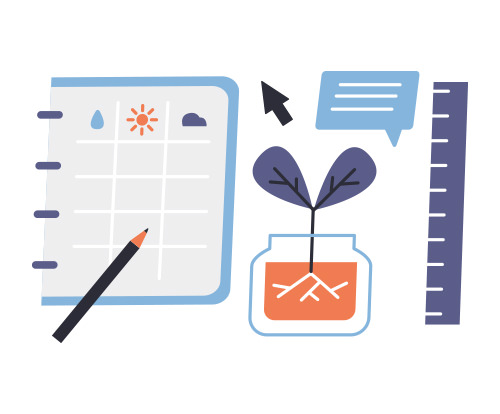Blog
Project-Based Learning: Promoting Critical Thinking and Problem Solving
on October 24, 2022

Project-based learning (PBL) is a growing educational trend and teaching method that focuses on applying knowledge from different disciplines to create real-world solutions.
It also encourages students to solve problems through collaboration and the use of critical thinking.
The end goal of project-based learning is for students to be able to apply what they’ve learned in the classroom to real-life situations.
How Does Project-Based Learning Work?
Unlike traditional scholastic learning in which students pore over books and are required to memorize information in written exams, project-based learning utilizes a much more hands-on approach to learning.
Students are required to work on a project over a long period of time – this could be as short as a week or as long as a whole semester – with the goal of solving a problem or answering a complex question.
They create a product or presentation for an audience and are required to demonstrate the knowledge that they acquired while working on the project.
As a result, students learn a bevy of both hard and soft skills such as communication, collaboration, critical thinking, and creativity. The focus is shifted away from rote learning and more towards practical and actionable skill sets that can later be utilized in real-world applications.
The skills that students learn during these projects are in-demand and actionable, meaning that they translate effectively into the working world.
The Benefits of Project-Based Learning
Above, we touched on some of the benefits of project-based learning such as increased creativity and communication, but let’s take a more comprehensive look at some of the other benefits associated with PBL:
- Students engage and interact with educational content on a much deeper level
- Students develop peer networks that enhance the learning experience (this also teaches them valuable social skills)
- Students are exposed to practical, actionable skills such as problem-solving and critical thinking
- Students gain valuable insights into different career paths that await them after school
- For older learners, there’s the potential for engagement with potential employers (there’s also the opportunity to connect with mentors in their industry of choice)
- Students are given more autonomy over their learning journey
Implementing Project-Based Learning
Here are a number of steps for implementing PBL, which are detailed below:
Start with a Question
The first step to implementing PBL is deciding on an open-ended question that will form the basis of the problem that your students have to solve. This question has to engage the students.
It also shouldn’t have a singular answer. Students should be able to interpret the question and engage their critical thinking in order to answer it in a way that demonstrates their capacity to solve problems.
A good starting point is to choose a real-world topic that is relevant to your students. What’s happening in the world right now? Even closer – what’s happening in the local community?
The question should have meaning in the students’ lives, and the answer of the question should deliver impact.
If you’re still unsure, check out these two great resources for coming up with relevant, driving questions:
- How to Write Effective Driving Questions for Project-Based Learning
- How to Refine Driving Questions for Effective Project-Based Learning
Design a Plan
Now that you have a question that lays bare a problem, it’s time to design a plan that will allow your students to work towards completing their project.
The plan should involve activities that support the question while addressing a broad range of subjects and disciplines; it should cover as many subjects in your curriculum as possible.
When developing a plan, you should also keep in mind the materials and resources that you will need to support the students as they work.
Create a Schedule
Next, you’ll want a timeline that will allow your students to realize the project in a timely manner.
It’s important that your schedule is flexible to allow for the inevitable changes that occur as the project progresses. It’s equally important that students have a deadline to know when they have to summarize their findings.
Consider the following:
- How much time is being allotted to the project?
- Will this project take up the entire school day?
- If not, how much of the school day should be dedicated to finishing this project?
Schedules should not only be a way of tracking time, but also serve as a way of teaching students how to schedule their tasks, set deadlines, and stick to a timeline.
Assign Roles and Monitor Progress
While students are working on the project, it’s important to keep oversight while not preventing them from taking responsibility.
Split students into groups and allow them to choose their primary roles. The roles shouldn’t be too rigid; students should have the flexibility to change roles as the project progresses. However, this shouldn’t stop them from assuming responsibility for the group as a whole. The point here is to teach the students to work collectively.
As the students continue on the project, monitor their progress. Encourage students to refine their methods as they move forward, changing goals and discontinuing protocols that aren’t working when necessary.
Assess the Outcome
Once the students have completed the project, it’s time to assess their outcomes.
The assessment should serve a number of different purposes:
- Aid you and other educators in setting standards for future projects
- Help students evaluate their progress and how it relates to the progress of other students
- Provide students with feedback on how well they completed the task and areas in which they can improve
Are You Ready to Implement Project-Based Learning in Your Curriculum?
If PBL appeals to you and sounds like the type of framework that you’d like to use in your curriculum, sign up with a.school today to help you get started.
